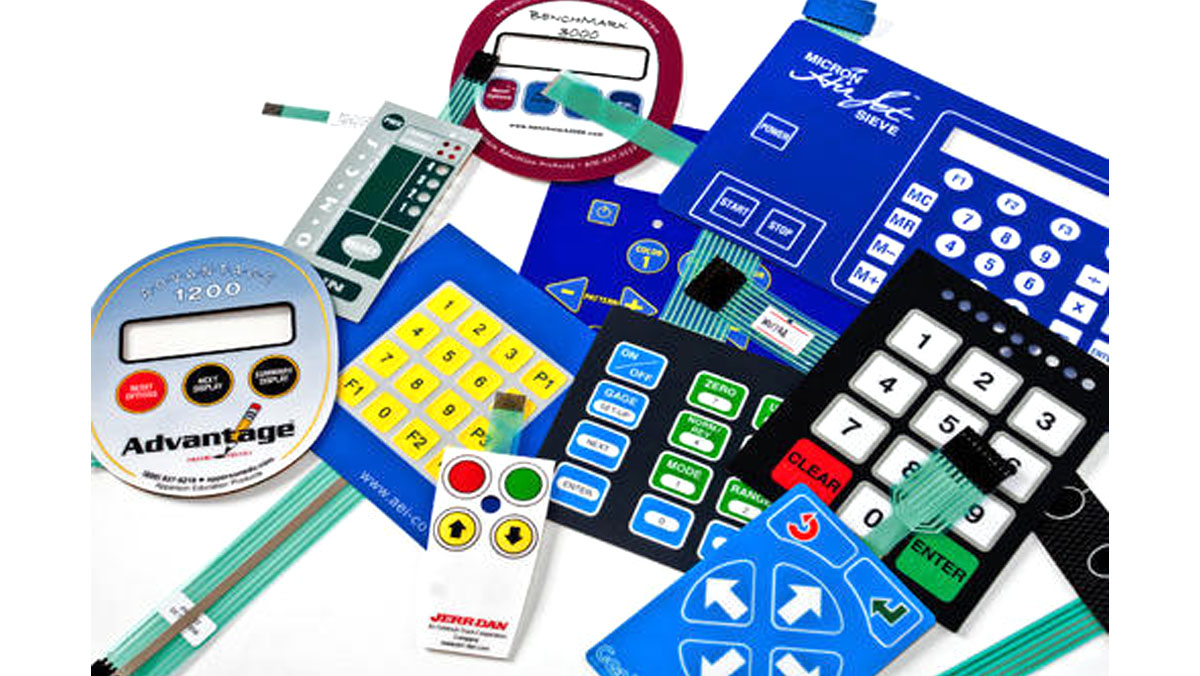Choosing the Right Membrane Switch for Your Business Needs
Choosing the Right Membrane Switch for Your Business Needs
Blog Article
Recognizing Membrane Layer Switches Over: The Secret to Reliable and sturdy Controls

What Are Membrane Buttons?
Membrane layer buttons are an innovative service in the realm of interface innovation, incorporating performance and layout effortlessly. These devices function as a user interface in between customers and digital systems, integrating numerous components right into a compact style. Generally constructed from flexible, thin layers of materials, membrane buttons are created to reply to touch, making it possible for customers to communicate with equipment and electronic devices properly.
The primary elements of a membrane switch include a published circuit layer, graphic overlay, and a spacer layer that avoids unexpected activation. The visuals overlay can be tailored to show brand identification or customer preferences, improving aesthetics while guaranteeing use. Membrane layer switches are typically made use of in numerous applications, including medical tools, consumer electronic devices, and industrial tools, owing to their resilience and resistance to ecological variables such as wetness and dust.
One of the key advantages of membrane buttons is their capability to stand up to wear and tear, making them ideal for high-traffic settings. Additionally, they are light-weight and require very little room, enabling cutting-edge styles in product growth. Overall, membrane changes represent a reliable and practical choice for contemporary electronic user interfaces, weding modern technology with user-centric layout principles.
How Membrane Layer Switches Job
The operation of membrane layer switches hinges on a straightforward yet effective device that converts user input into electronic signals. These buttons are composed of multiple layers, normally consisting of a visuals overlay, a spacer layer, and a circuit layer. When a user presses the button, the top layer deforms, enabling a conductive aspect in the circuit layer to reach a corresponding conductive pad on the bottom of the graphic overlay. This contact shuts the circuit and sends out an electronic signal to the device, indicating that the switch has been turned on.
The style of membrane layer switches can differ, however they often include domes or responsive components to supply responses to the customer, enhancing the general experience - membrane switch. The products made use of in membrane layer switches, such as polyester or polycarbonate, add to their sturdiness and resistance to ecological aspects, consisting of wetness and dirt. The printed circuits are normally encapsulated, which protects them from wear and tear over time.
Benefits of Membrane Layer Switches

In addition, membrane switches are understood for their resilience. Created from durable materials, they are immune to dust, dampness, and physical wear, which considerably prolongs their life expectancy contrasted to traditional mechanical switches. This toughness makes them specifically ideal for high-traffic environments and applications needing durability.
Another substantial advantage is the convenience of cleansing and maintenance. The smooth surface of membrane switches minimizes dust accumulation and is typically unsusceptible spills, making them perfect for settings that require regular sanitization.
Additionally, membrane buttons supply a structured account, bring about a thinner layout that can be integrated into numerous gadgets without adding bulk. This attribute not just boosts the aesthetic appeal yet likewise adds to a more ergonomic item design.
Applications of Membrane Layer Switches
Functional and easy to use, membrane buttons find applications throughout a wide variety of industries, including medical devices, consumer electronics, and commercial devices. In the medical area, these buttons are important to gadgets such as Clicking Here analysis equipment, individual tracking systems, and infusion pumps, where integrity and simplicity of cleansing are crucial. Their capacity to stand up to extreme environments and keep capability makes them perfect for such applications.

In customer electronic devices, membrane buttons are utilized in products like microwaves, washing equipments, and push-button controls - membrane switch. Their streamlined design permits instinctive interface, enhancing the overall individual experience while giving sturdiness and resistance to put on and tear
Commercial devices likewise gains from membrane layer buttons, particularly in control panels for equipment and automation systems. These switches offer defense versus dirt and dampness, ensuring constant performance in challenging settings. Furthermore, their adjustable functions permit suppliers to tailor them to specific functional needs, enhancing effectiveness and capability.
Picking the Right Membrane Layer Switch Over
When selecting helpful site a membrane layer button, it is important to take into consideration different variables that influence performance and viability for certain applications. The main considerations consist of environmental problems, responsive feedback, sturdiness, and style specs.
First, examine the operating setting; buttons revealed to moisture, chemicals, or severe temperature levels need certain materials to make certain durability and performance. Next, assess the requirement for tactile comments. Depending on customer interaction, some applications might gain from a responsive feedback to confirm activation, while others may favor a non-tactile layout for aesthetic factors.
Resilience is one more crucial element; membrane layer switches need to be designed to endure constant usage, influences, and abrasion. Make certain the selected switch can withstand the expected lifecycle, especially in high-usage scenarios.

Final Thought
In verdict, membrane layer switches over offer as essential parts in the style of reputable and resilient control systems throughout different sectors. The versatility of membrane switches over enables for tailored remedies that satisfy certain functional needs, strengthening their value in modern-day technology.
Membrane switches over stand for an important element of modern user interface layout, mixing functionality with durability in various applications.Membrane buttons are an innovative option in the world of customer interface technology, combining functionality and design flawlessly. Usually built from flexible, slim layers of products, membrane layer buttons are created to react to touch, making it possible for users to connect with machinery and digital devices successfully.
The layout of membrane buttons can vary, yet they frequently about his integrate domes or responsive aspects to provide feedback to the user, improving the total experience.In verdict, membrane switches offer as necessary parts in the design of reliable and long lasting control systems across various sectors.
Report this page